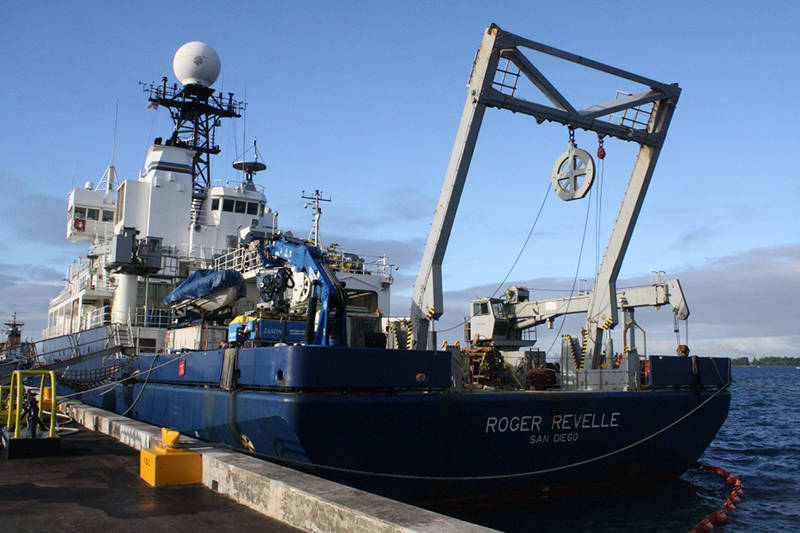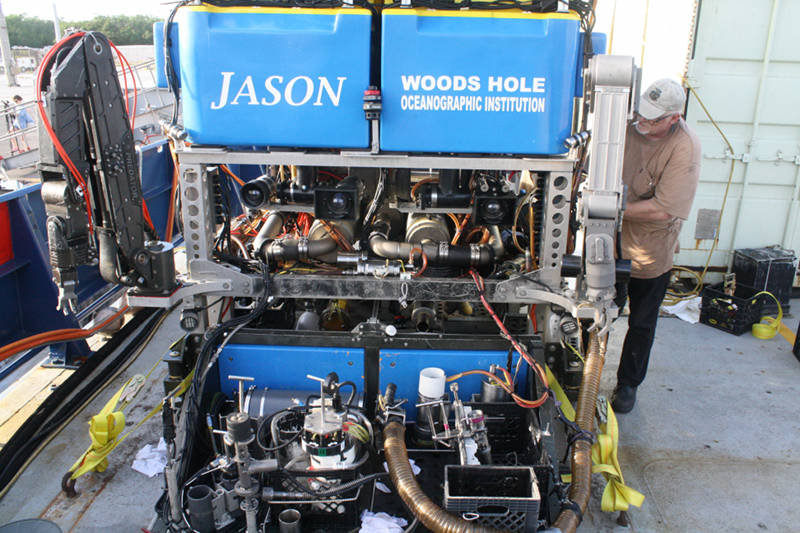
By Bill Chadwick - Oregon State University and NOAA Pacific Marine Environmental Laboratory
November 29, 2014

The R/V Revelle in Guam preparing to depart on the Submarine Ring of Fire 2014 Ironman mission. Image courtesy of Submarine Ring of Fire 2014 - Ironman, NOAA/PMEL, NSF. Download larger version (jpg, 6.6 MB).
Every expedition like this one takes months or even years of planning and preparation. First comes the idea for the project, questions to be answered, or hypotheses to be tested. Then a proposal is written making an argument for why the project is important and should be funded. It is reviewed and if we’re lucky science funding agencies decide it is worth supporting.
In the months leading up to an expedition, equipment is readied and shipped to the port from which the ship will be departing. The days before departure are very busy while equipment is loaded on the ship and set up in the various scientific labs, and all instruments and systems are checked to make sure they are working properly. This applies to the Jason ROV as well, and requires a lot of careful coordination between the ship’s crew, the Jason team, and the science party. Then, if all goes well, everything is ready when it is time to depart.

The Jason ROV is prepared for the first dive. Image courtesy of Submarine Ring of Fire 2014 - Ironman, NOAA/PMEL, NSF. Download larger version (jpg, 7.3 MB).
Our science party is a diverse group coming together from 7 different organizations in the US and Canada. Some of us have sailed together before, and some faces are new. There are always some mixed feelings at the beginning of a research cruise: excitement about potential discoveries we hope to find, worry about all the things that could go wrong, confidence in the group we have assembled, and gratitude for all the hard work that everyone has put in already, even before we start.
We’re just now leaving port in Guam and heading to our first dive site at Snail Vent, which is located on the southern Mariana back-arc. Low-temperature diffuse hydrothermal vents have been found here before and they host iron-oxidizing bacterial mats, so it is one of our target sites for sampling. We hope to get Jason in the water for its first dive this evening.Departing Guam. Video courtesy of Submarine Ring of Fire 2014 - Ironman, NSF/NOAA. Video produced by Saskia Madlener. Music by Charlie Brooks. Download (mp4, 14.3 MB)
Leaving Port. Video courtesy of Submarine Ring of Fire 2014 - Ironman, NSF/NOAA. Video produced by Saskia Madlener. Music by Charlie Brooks. Download (mp4, 13.0 MB)